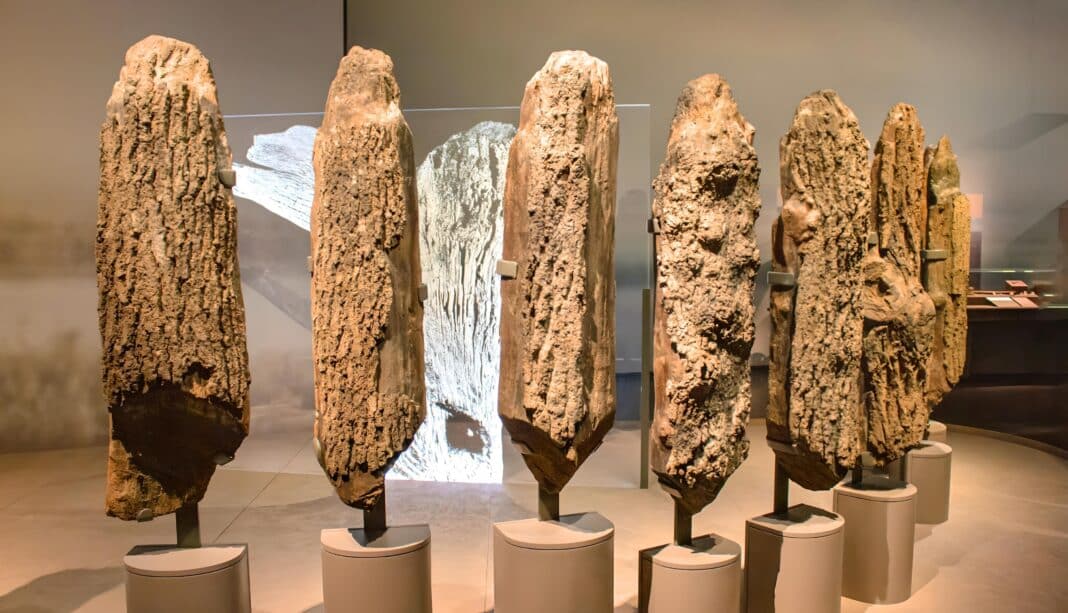A new study found that the 4,000-year-old timber circle known as “Seahenge” was constructed in 2049 BC following extreme climate degradation during the third millennium BC.
First discovered in 1998, the ancient structure consists of an upturned tree stump encircled by 55 closely spaced oak posts. The structure was strategically positioned so that dunes and mud flats shielded it from the sea.
A layer of peat gradually covered the timbers, preserving them from decay over millennia. An adjacent, similar ring centred on two flat oak logs has also been dated to the same period.
Previous studies suggested the structures might have been erected to commemorate the death of a significant figure, whilst other theories proposed it was used for sky burials, where the dead were placed inside the structure before being pecked at and carried away by carrion-eating birds.
However, a new paper concludes that Seahenge and the adjacent circle may have been constructed during a bitterly cold climatic period as a ritual to extend the summer and return to warmer weather.
“Dating of Seahenge timbers showed they were felled in spring, and it was considered most probable that these timbers were aligned with sunrise on the summer solstice,” according to David Nance, an archaeologist from the University of Aberdeen.
“We know that the period in which they were constructed 4,000 years ago was marked by prolonged periods of decreased atmospheric temperatures and severe winters and late springs, placing early coastal societies under stress,” he added.
According to Dr Nuance, Seahenge’s alignment with the sunrise during the summer solstice suggests it mirrored the “pen” described in folklore for a fledgling cuckoo to keep singing and extend the summer.
Archaeologists believe the monument’s structure imitates the winter habitats of the cuckoo remembered in folklore – a hollow tree or ‘the bowers of the Otherworld’ represented by the upturned oak stump.
“Summer solstice was the date when, according to folklore, the cuckoo, symbolising fertility, traditionally stopped singing, returned to the Otherworld, and the summer went with it,” Dr Nance explained. “The ritual is remembered in the ‘myth of the pent cuckoo’ where a fledgling cuckoo was placed into a thorn bush and ‘walled-in’ to prolong the summer, but it always flew away.”
According to Dr Nance, the other structure alludes to legends of ‘sacred kings’ who were sacrificed if misfortune befell the community.
“Evidence suggests that they were ritually sacrificed every eight years at Samhain (now Halloween), coinciding with the eight-year cycle of Venus,” he said. Adding that “both monuments are best explained as having different functions and associated rituals, but with a common intent: to end the severely cold weather.”






